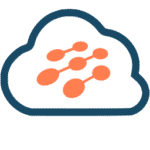check before: 2024-01-01
Product:
Microsoft 365 admin center, Microsoft 365 Groups, Outlook, SharePoint, Teams
Platform:
Online, US Instances, Web, World tenant
Status:
In development
Change type:
New feature, Admin impact
Links:

Details:
With this in-product feature support, end users and admins will be able to add other groups as member of a Dynamic Microsoft 365 Group by using the memberOf property. In the preview, users will be able to create these GDM a.k.a nested groups from Azure Portal & Group Card and they can be accessed & used like any other Dynamic Microsoft 365 Group across apps like Teams, Outlook & SharePoint. Enhancements around deeper levels of nesting, increasing the number of memberOf groups in a tenant are also being worked on and will be eventually available for GA.
Change Category:
XXXXXXX ...
Scope:
XXXXXXX ...
Release Phase:
General Availability
Created:
2021-05-20
updated:
2023-12-07
the free basic plan is required to see all details. Sign up here
A cloudsocut.one plan is required to see all the changed details. If you are already a customer, choose login.
If you are new to cloudscout.one please choose a plan.

changes*
| Date | Property | old | new |
| 2023-12-07 | RM Release | December CY2024 | January CY2024 |
| 2023-10-18 | RM Preview | June CY2023 | |
| 2023-10-18 | RM Description | With this in-product feature support, end users and admins will be able to add a Security Group or an Microsoft 365 Group as a member of a Dynamic Microsoft 365 Group by using the memberOf property. In the preview, users will be able to create these GDM a.k.a nested groups from Azure Portal & Group Card and they can be accessed & used like any other Dynamic Microsoft 365 Group across apps like Teams, Outlook & SharePoint. Enhancements around deeper levels of nesting, increasing the number of memberOf groups in a tenant are also being worked on and will be eventually available for GA. | With this in-product feature support, end users and admins will be able to add other groups as member of a Dynamic Microsoft 365 Group by using the memberOf property. In the preview, users will be able to create these GDM a.k.a nested groups from Azure Portal & Group Card and they can be accessed & used like any other Dynamic Microsoft 365 Group across apps like Teams, Outlook & SharePoint. Enhancements around deeper levels of nesting, increasing the number of memberOf groups in a tenant are also being worked on and will be eventually available for GA. |
| 2023-10-18 | RM Title | Microsoft 365 admin center: Groups - Group Driven Membership Management | Microsoft 365 admin center: Group Driven Membership Management |
| 2023-10-18 | RM Release | December CY2023 | December CY2024 |
| 2023-02-15 | RM Description | With this in-product feature support, end users and admins will be able to add a Security Group or an M365 Group as a member of a Dynamic M365 Group by using the memberOf property. In the preview, users will be able to create these GDM a.k.a nested groups from Azure Portal & Group Card and they can be accessed & used like any other Dynamic M365 Group across apps like Teams, Outlook & SharePoint. Enhancements around deeper levels of nesting, increasing the number of memberOf groups in a tenant are also being worked on and will be eventually available for GA. | With this in-product feature support, end users and admins will be able to add a Security Group or an Microsoft 365 Group as a member of a Dynamic Microsoft 365 Group by using the memberOf property. In the preview, users will be able to create these GDM a.k.a nested groups from Azure Portal & Group Card and they can be accessed & used like any other Dynamic Microsoft 365 Group across apps like Teams, Outlook & SharePoint. Enhancements around deeper levels of nesting, increasing the number of memberOf groups in a tenant are also being worked on and will be eventually available for GA. |
| 2022-09-03 | RM Release | January CY2023 | December CY2023 |
| 2022-09-03 | RM Preview | June CY2023 | |
| 2022-08-30 | RM Release | December CY2022 | January CY2023 |
| 2022-08-30 | RM Title | Microsoft 365 admin center: Groups - Group Driven Membership Management | Microsoft 365 admin center: Groups - Group Driven Membership Management |
| 2022-08-30 | RM Description | With this in-product feature support, end users and admins will be able to add a Security Group or an Microsoft 365 Group as a member of an Microsoft 365 Group. The release will be made in phases– one Office 365 app at a time will start supporting the nesting ability andeventually be expanded to all Office workloads. | With this in-product feature support, end users and admins will be able to add a Security Group or an M365 Group as a member of a Dynamic M365 Group by using the memberOf property. In the preview, users will be able to create these GDM a.k.a nested groups from Azure Portal & Group Card and they can be accessed & used like any other Dynamic M365 Group across apps like Teams, Outlook & SharePoint. Enhancements around deeper levels of nesting, increasing the number of memberOf groups in a tenant are also being worked on and will be eventually available for GA. |
*starting April 2022
Last updated 5 months ago




